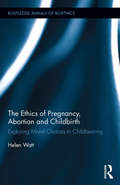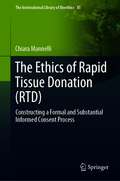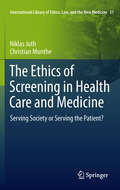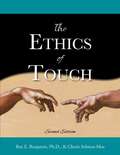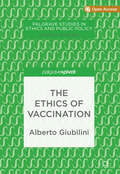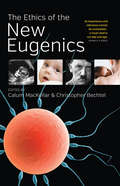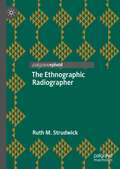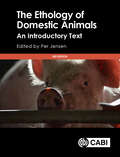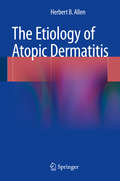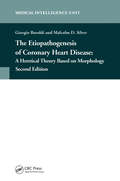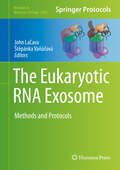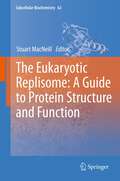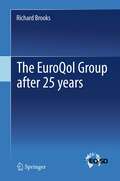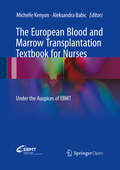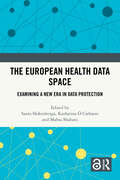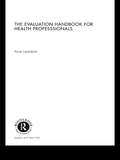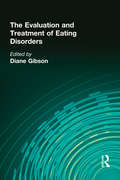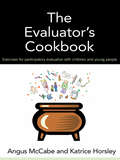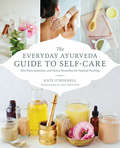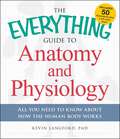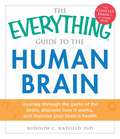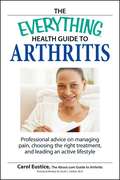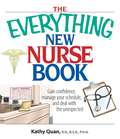- Table View
- List View
The Ethics of Pregnancy, Abortion and Childbirth: Exploring Moral Choices in Childbearing (Routledge Annals of Bioethics)
by Helen WattThe Ethics of Pregnancy, Abortion and Childbirth addresses the unique moral questions raised by pregnancy and its intimate bodily nature. From assisted reproduction to abortion and ‘vital conflict’ resolution to more everyday concerns of the pregnant woman, this book argues for pregnancy as a close human relationship with the woman as guardian or custodian. Four approaches to pregnancy are explored: ‘uni-personal’, ‘neighborly’, ‘maternal’ and ‘spousal’. The author challenges not only the view that there is only one moral subject to consider in pregnancy, but also the idea that the location of the fetus lacks all inherent, unique significance. It is argued that the pregnant woman is not a mere ‘neighbor’ or helpful stranger to the fetus but is rather already in a real familial relationship bringing real familial rights and obligations. If the status of the fetus is conclusive for at least some moral questions raised by pregnancy, so too are facts about its bodily relationship with, and presence in, the woman who supports it. This lucid, accessible and original book explores fundamental ethical issues in a rich and often neglected area of philosophy in ways of interest also to those from other disciplines.
The Ethics of Rapid Tissue Donation: Constructing a Formal and Substantial Informed Consent Process (The International Library of Bioethics #85)
by Chiara MannelliThis book offers a reflection on the central role that the ethics of informed consent plays in Rapid Tissue Donation (RTD). RTD is an advanced oncology procedure that involves the procurement, for research purposes, of “fresh” tissues within two to six hours of a cancer patient’s death. Since RTD involves the retrieval of tissues after death, and since the collected tissues are of great importance for medical research, the need for any form of informed consent to regulate this procedure has been questioned. This book argues for the necessity of informed consent to govern RTD, and it provides the reader with a bespoke informed consent process applicable to cancer patients. The analysis unfolds at the intersection between applied ethics, public health ethics, and clinical ethics, and it is informed by philosophical theories of informed consent and by the social implications of individual choices. By viewing medical issues relating to informed consent in oncology from an ethical perspective, the book combines philosophical analysis with discussion of concrete cancer-related issues. As a result, the book is suitable for readers interested in ethical reasoning as well as for those with a medical background. It contributes to contemporary research by offering an original analysis that relies on a rigorous philosophical approach to address innovative issues at the cutting edge of medical research and policy making.
The Ethics of Screening in Health Care and Medicine: Serving Society or Serving the Patient?
by Niklas Juth Christian MuntheMedical or health-oriented screening programs are amongst the most debated aspects of health care and public health practices in health care and public health ethics, as well as health policy discussions. In spite of this, most treatments of screening in the research literature restrict themselves to isolated scientific aspects, sometimes complemented by economic analyses or loose speculations regarding policy aspects. At the same time, recent advances in medical genetics and technology, as well as a rapidly growing societal focus on public health concerns, inspires an increase in suggested or recently started screening programs. This book involves an in-depth analysis of the ethical, political and philosophical issues related to health-oriented screening programs. It explores the considerations that arise when heath care interacts with other societal institutions on a large scale, as is the case with screening: What values may be promoted or compromised by screening programs? What conflicts of values do typically arise " both internally and in relation to the goals of health care, on the one hand, and the goals of public health and the general society, on the other? What aspects of screening are relevant for determining whether it should be undertaken or not and how it should be organised in order to remain defensible? What implications does the ethics of screening have for health care ethics as a whole? These questions are addressed by applying philosophical methods of conceptual analysis, as well as models and theories from moral and political philosophy, medical ethics, and public health ethics, to a large number of ongoing and proposed screening programs which makes this book the first comprehensive work on the ethics of screening. Analyses and suggestions are made that are of potential interest to health care staff, medical researchers, policy makers and the general public.
The Ethics of Touch: The Hands-on Practitioner's Guide to Creating a Professional Safe and Enduring Practice (Second Edition)
by Cherie Sohnen-Moe Ben E. BenjaminThe authors directly address the difficult, confusing, and seldom-discussed-but-often-troubling dilemmas confronting touch therapy practitioners and help in expanding their knowledge about the field of ethics.
The Ethics of Vaccination (Palgrave Studies in Ethics and Public Policy)
by Alberto GiubiliniThis open access book discusses individual, collective, and institutional responsibilities with regard to vaccination from the perspective of philosophy and public health ethics. It addresses the issue of what it means for a collective to be morally responsible for the realisation of herd immunity and what the implications of collective responsibility are for individual and institutional responsibilities.The first chapter introduces some key concepts in the vaccination debate, such as ‘herd immunity’, ‘public goods’, and ‘vaccine refusal’; and explains why failure to vaccinate raises certain ethical issues. The second chapter analyses, from a philosophical perspective, the relationship between individual, collective, and institutional responsibilities with regard to the realisation of herd immunity. The third chapter is about the principle of least restrictive alternative in public health ethics and its implications for vaccination policies. Finally, the fourth chapter presents an ethical argument for unqualified compulsory vaccination, i.e. for compulsory vaccination that does not allow for any conscientious objection. The book will appeal to philosophers interested in public health ethics and the general public interested in the philosophical underpinning of different arguments about our moral obligations with regard to vaccination.
The Ethics of the New Eugenics
by Calum Mackellar Christopher BechtelStrategies or decisions aimed at affecting, in a manner considered to be positive, the genetic heritage of a child in the context of human reproduction are increasingly being accepted in contemporary society. As a result, unnerving similarities between earlier selection ideology so central to the discredited eugenic regimes of the 20th century and those now on offer suggest that a new era of eugenics has dawned. The time is ripe, therefore, for considering and evaluating from an ethical perspective both current and future selection practices. This inter-disciplinary volume blends research from embryology, genetics, philosophy, sociology, psychology, and history. In so doing, it constructs a thorough picture of the procedures emerging from today's reproductive developments, including a rigorous ethical argumentation concerning the possible advantages and risks related to the new eugenics.
The Ethnographic Radiographer
by Ruth M. StrudwickWritten from the perspective of a diagnostic radiography educator, this book introduces readers to ethnography as a methodology and examines how an ethnographic researcher sees the world in which they live.
The Ethology of Domestic Animals: An Introductory Text
by John Bradshaw Georgia Mason Daniel Weary Joy Mench Linda Keeling Marek Spinka Professor Michael Mendl Hanno Würbel Dr Deborah Wells Anna Valros Susan Held Hanne Løvlie Susanne Waiblinger Professor Daniel Mills Cassandra Tucker Cathy Dwyer Anne-Lene HovlandCompletely updated, revised and redesigned in colour throughout, this classic bestselling text continues to provide a concise introduction to the important fundamentals of animal behaviour from genetics, physiology, motivation, learning and cognition, through to social and reproductive behaviour, abnormal behaviour and human-animal interactions. - Concise but comprehensive coverage of all the fundamentals of animal behaviour in companion, farm and laboratory animals. - Expert authors and key opinion leaders from around the world provide the latest evidence-based information on animal behaviour and welfare. - A revised layout and design, means it is easy to find key information at a glance, making it an ideal rapid revision tool. - New for the third edition: new chapters on fur animals with the inclusion of more species and expanded sections on canine behaviour. This text remains a highly respected, essential resource for both students and lecturers in animal and veterinary science, animal welfare, zoology and psychology.
The Etiology of Atopic Dermatitis
by Herbert B. AllenThis book will present completely new, unique findings in eczema: sweat ducts that become occluded with staphylococcal biofilms trigger the innate immune system with TLR2 receptor activity and this leads to production of the "itching" and inflammation in this disease. Dermatologists and pediatricians treat eczema exceedingly well and this is ordinarily accomplished with corticosteroid containing topicals. However, after treatment, it is intriguing that aggressive moisturization and cautious bathing will in most instances prevent future flares of the disease, even though it is precipitated by bacteria and their biofilms. Diseases where eczema has been found with a completely unrelated disorder have shown occluded sweat ducts on histopathologic examination. These include Meyerson's nevus which has a nevus and eczema in the same biopsy and Doucas Kapetanakis-type of pigmented purpuric dermatosis that shows occluded sweat ducts along with the capillaritis.
The Etiopathogenesis of Coronary Heart Disease: A Heretical Theory Based on Morphology, Second Edition
by Giorgio Baroldi Malcolm D. SilverThe natural history of a heretic viewpoint on the functional significance of morphologic findings. Comparative pathologic study.Natural history of the human coronary atherosclerotic plaque and related forms of myocardial injuries.Findings in acute coronary syndromes.Revisiting dogma related to coronary artery disease.Adrenergic stress.
The Eukaryotic RNA Exosome: Methods and Protocols (Methods in Molecular Biology #2062)
by John LaCava Štěpánka VaňáčováThis volume provides a cross-section of RNA exosome research protocols, applied to a diversity of model organisms. Chapters guide readers through methods that e.g. delineate eukaryotic exosomes’ origins in prokaryotes, probe its RNA substrates, adapter complexes and macromolecular interaction of networks, and establish critical structural-function relationships. Written in the highly successful Methods in Molecular Biology series format, chapters include introductions to their respective topics, lists of the necessary materials and reagents, step-by-step, readily reproducible laboratory protocols, and tips on troubleshooting and avoiding known pitfalls. Authoritative and cutting-edge, The Eukaryotic RNA Exosome: Methods and Protocols aims to ensure successful results in the further study of this vital field.
The Eukaryotic Replisome: a Guide to Protein Structure and Function
by Stuart MacneillHigh-fidelity chromosomal DNA replication underpins all life on the planet. In humans, there are clear links between chromosome replication defects and genome instability, genetic disease and cancer, making a detailed understanding of the molecular mechanisms of genome duplication vital for future advances in diagnosis and treatment. Building on recent exciting advances in protein structure determination, the book will take the reader on a guided journey through the intricate molecular machinery of eukaryotic chromosome replication and provide an invaluable source of information, ideas and inspiration for all those with an interest in chromosome replication, whether from a basic science, translational biology and medical research perspective.
The EuroQol Group after 25 years
by Richard BrooksThe EuroQol Group first met in Rotterdam in May 1987 determined to develop a standardised non-disease-specific instrument for valuing health-related quality of life. The book traces the activities of the Group over the next 25 years. The instrument constructed, eventually named the EQ-5D, was translated into many languages and used in a wide range of countries and settings. The book describes how the instrument's descriptive system was determined, how translation and language issues were handled, and how valuations were provided. Recent developments, in particular a 5-level version (EQ-5D-5L), and a youth version (EQ-5D-Y) are covered. The history of the institutional and administrative framework within which the Group operated is also treated.
The European Blood and Marrow Transplantation Textbook for Nurses: Under The Auspices Of Ebmt
by Michelle Kenyon Aleksandra BabicThis book is open access under a CC BY 4.0 license.This textbook, endorsed by the European Society for Blood and Marrow Transplantation (EBMT), provides adult and paediatric nurses with a full and informative guide covering all aspects of transplant nursing, from basic principles to advanced concepts. It takes the reader on a journey through the history of transplant nursing, including essential and progressive elements to help nurses improve their knowledge and benefit the patient experience, as well as a comprehensive introduction to research and auditing methods. This new volume specifically intended for nurses, complements the ESH-EBMT reference title, a popular educational resource originally developed in 2003 for physicians to accompany an annual training course also serving as an educational tool in its own right.This title is designed to develop the knowledge of nurses in transplantation. It is the first book of its kind specifically targeted at nurses in this specialist field and acknowledges the valuable contribution that nursing makes in this area. This volume presents information that is essential for the education of nurses new to transplantation, while also offering a valuable resource for more experienced nurses who wish to update their knowledge.
The European Blood and Marrow Transplantation Textbook for Nurses: Under the Auspices of EBMT
by Michelle Kenyon Aleksandra BabicThis Open Access Second Edition textbook, endorsed by the EBMT, provides adult and pediatric nurses with a full and informative guide covering all aspects of transplant nursing including a new chapter dedicated to cellular therapy, nursing implications and care. This book takes the reader from basic principles to advanced concepts on a journey through the history of transplant nursing, including essential and progressive elements to help nurses improve their knowledge and benefit the patient experience, as well as a comprehensive introduction to research and auditing methods. This second edition specifically intended for nurses, complements the EBMT Handbook, a popular educational resource originally developed in 2003 for physicians to accompany an annual training course also serving as an educational reference tool in its own right.This title is designed to develop the knowledge of nurses in transplantation. It is the only one of its kind written by nurse experts, specifically targeted at nurses in this specialist field and acknowledges the valuable contribution that nursing makes to patient care in this area. This new volume presents updated content that is essential for the education of nurses new to transplantation, while also offering a valuable resource for more experienced nurses who wish to refresh their knowledge. This Textbook is open access under a CC BY 4.0 license.
The European Health Data Space: Examining A New Era in Data Protection
by Santa Slokenberga Katharina Ó Cathaoir Mahsa ShabaniThis timely volume provides a comprehensive examination of how the proposed new European Health Data Space (EHDS) legislation will impact upon health and genetic data, individual privacy and providers of health services.With the current legal framework recognised as insufficient in protecting data-related rights, the book spotlights the opportunities and challenges posed by the EHDS in balancing the interests of individuals with policymakers and researchers. It considers the impact on individual EU member states while highlighting issues such as changes to patients’ rights, wearable technology, developments in e-health and the secondary use of medical data. Critically, it also examines how the EHDS will operate within existing legal frameworks, including the General Data Protection Regulation, the Data Governance Act and the Data Act.Including contributions from some of the leading scholars in this area, this groundbreaking book will be key reading for students and researchers across law and public health.Chapters 2, 10 and 11 have been made available under a Creative Commons Attribution-NonCommercial-NoDerivatives (CC-BY-NC-ND) 4.0 license. Chapter 5 has been made available under a Creative Commons Attribution (CC-BY) 4.0 license.
The Evaluation Handbook for Health Professionals
by Anne LazenbattThis easy-to-use handbook is a useful resource for all health professionals engaged in processes of evaluation in a variety of contexts within the world of healthcare. Encouraging an evidence-based approach to practice, it provides:* guidelines on how to design and evaluate an intervention* examples of good practice* reliable and easy-to-use measures* advice on how to work effectively.Designed to prompt self-evaluation and group project evaluation, it illustrates how simple evaluation methods can help to break down the divisions between research and practice. It shows how more practitioners can apply such methods to improve the quality of care as well as the treatments and services which they offer their patients and clients. The examples, drawn from clinical settings, community practice and work in the voluntary sector, demonstrate the kind of evaluation that can be undertaken by a small-scale team or a single practitioner with limited resources.The Evaluation Handbook will be a useful source of reference for those new to evaluation as well as more experienced managers and researchers.
The Evaluation and Treatment of Eating Disorders
by Diane GibsonThis important volume addresses a growing problem prevalent in hospitalized patients--eating disorders, including anorexia nervosa and bulimia. Experts present the latest findings on the theories, evaluation, and treatment of this pernicious syndrome. Clearly written and up-to-the-minute, this outstanding collection of interdisciplinary vantage points, overlapping theories, and program applications will be of great value to front-line clinicians. Also included are historical perspectives, the treatment and rehabilitation of eating disorders, characteristics of families with eating disorders, and much more.
The Evaluator's Cookbook: Exercises for participatory evaluation with children and young people
by Angus McCabe Katrice HorsleyParticipation is a vital element of working with children and young people – ensuring that services are meeting their needs as well as promoting citizenship, resilience and general well-being. The Evaluator’s Cookbook contains 21 participatory evaluation exercises for use with children, young people and families/community groups. Attractively and clearly presented, the exercises are very easy to use and come with suggestions for use and instructions on how to create the equipment needed. They will appeal to a wide range of people and can be used in a variety of informal and formal settings and most of the exercises are suitable for use with disabled children or children with special needs, as well as people with English as a second language. The book also explores why, how and where participatory research and evaluation should take place and provides suggestions on how the findings can be presented in imaginative ways. This unique book is an invaluable resource for those wishing to consult with children and families or evaluate social, health and education services in diverse cultural settings.
The Everyday Ayurveda Guide to Self-Care: Rhythms, Routines, and Home Remedies for Natural Healing
by Kate O'DonnellDiscover the best way to care for yourself--day by day and season by season.Embrace the ancient principles of Ayurveda to become a more integrated, whole, and healthy version of yourself. This detailed guide walks you through the steps of foundational Ayurvedic practices that can be easily integrated into your existing self-care routine--from self-massage, oil pulling, and tongue scraping to breathing practices, meditation exercises, and eating with intention--to uplift your physical health and state of mind.In The Everyday Ayurveda Guide to Self-Care, you will: • Get acquainted with the tradition of Ayurveda and better understand your doshas (metabolic tendencies) and basic Ayurvedic anatomy. • Discover the art of self-care by exploring daily routines and seasonal practices to prevent imbalances in the body and mind. • Find out what foods, spices, and herbs carry medicinal qualities that support cleansing, rejuvenation, and management of common ailments. <
The Everything Guide to Anatomy and Physiology (The Everything®)
by Kevin LangfordA plain-English guide to the human body and how it worksLooking for a companion text for your anatomy and physiology class? Need a refresher for a course you took years ago? Or are you just interested in learning more about how the human body works? Professor Kevin Langford walks you through all the structures of the body, from cells to organs to systems and how they interact. This all-in-one guide covers all you need to know about anatomy and physiology, including:Scientific terminology for organs, systems, and functionsThe functions of each system in the bodyHow systems are formed, from conception through adulthoodDiseases and disorders that affect each system With simple explanations and dozens of illustrations, The Everything Guide to Anatomy and Physiology provides a detailed look into the wonders of the human body.
The Everything Guide to the Human Brain: Journey Through the Parts of the Brain, Discover How It Works, and Improve Your Brain's Health
by Rudolph C HatfieldAn essential guide for understanding the inner workings of your brain!Do you really only use 10 percent of your brain? Can a bump to the head really restore memories? Does your brain ever lie to you? Why do you always forget where your glasses are, but never how to read?The brain makes you who you are. This fascinating organ creates your personality and controls your reactions and emotions. It's responsible for how you perceive the world around you--all while controlling hundreds of physical functions like breathing, moving, circulation, and digestion. The brain is simply amazing!The Everything Guide to the Human Brain will help you to unlock the mysteries of the brain. You'll learn how the brain communicates with each part of the body, how it affects your emotional life, why you dream, and how you remember things. And you'll also get in-depth descriptions of brain disorders and how science and medicine are working to heal or reverse them. Written in plain English, this ultimate user's guide will help you learn about the most influential part of your body!
The Everything Health Guide to Arthritis
by Carol EusticAre you tired of battling joint pain, stiffness, and soreness? With The Everything Health Guide to Arthritis, you'll learn to manage your pain and enjoy being more active.Carol Eustice, who has lived with arthritis for more than thirty years, gives you the strength and knowledge you need to:Work with your doctor to manage painExplore alternative treatment optionsStay healthy and active with proper dietProtect your jointsUse exercise to improve range of motion.With this helpful guide, you're just steps away from moving easier, feeling better, and improving your quality of life.
The Everything Health Guide to Arthritis: Get relief from pain, understand treatment and be more active!
by Carol EusticAre you tired of battling joint pain, stiffness, and soreness? With The Everything Health Guide to Arthritis, you'll learn to manage your pain and enjoy being more active.Carol Eustice, who has lived with arthritis for more than thirty years, gives you the strength and knowledge you need to:Work with your doctor to manage painExplore alternative treatment optionsStay healthy and active with proper dietProtect your jointsUse exercise to improve range of motion.With this helpful guide, you're just steps away from moving easier, feeling better, and improving your quality of life.
The Everything New Nurse Book
by Kathy QuanAs a new nurse, you're entering one of the most challenging and rewarding fields! Still, you may feel a little nervous about stepping into the brave new world of medical facilities. The Everything New Nurse Book addresses all your concerns and more. Covering the nation's top ten types of nursing, this comprehensive handbook concentrates on the issues that new nurses face every day on the job--from dealing with patients to juggling multiple responsibilities. Highlights include how to balance a hectic new schedule (for work AND sleep!); deal with the doctors' Old Boy Network; avoid illness yourself; continue your education while working at the same time; cope with the death of patients; and more. Written by Kathy Quan, a registered nurse with thirty years experience, The Everything New Nurse Book guides you through those first critical months on the job. If you want to know what to expect on your first day and beyond--this is the book for you!
